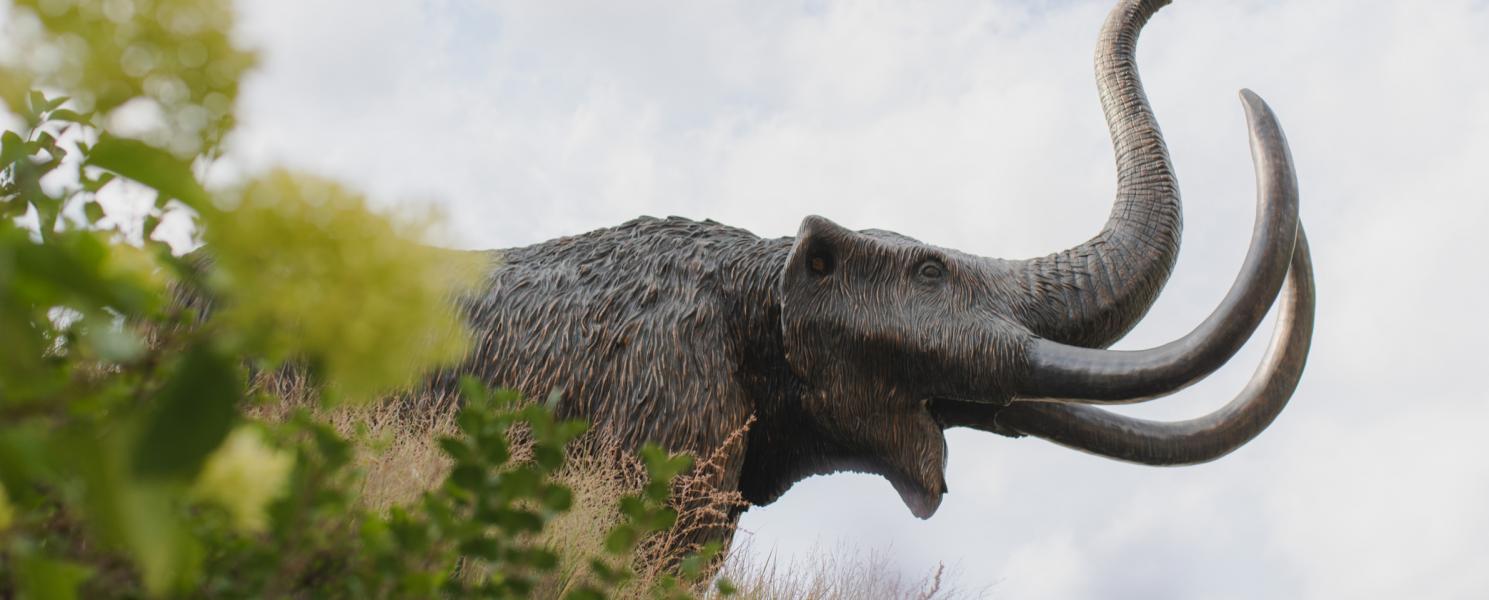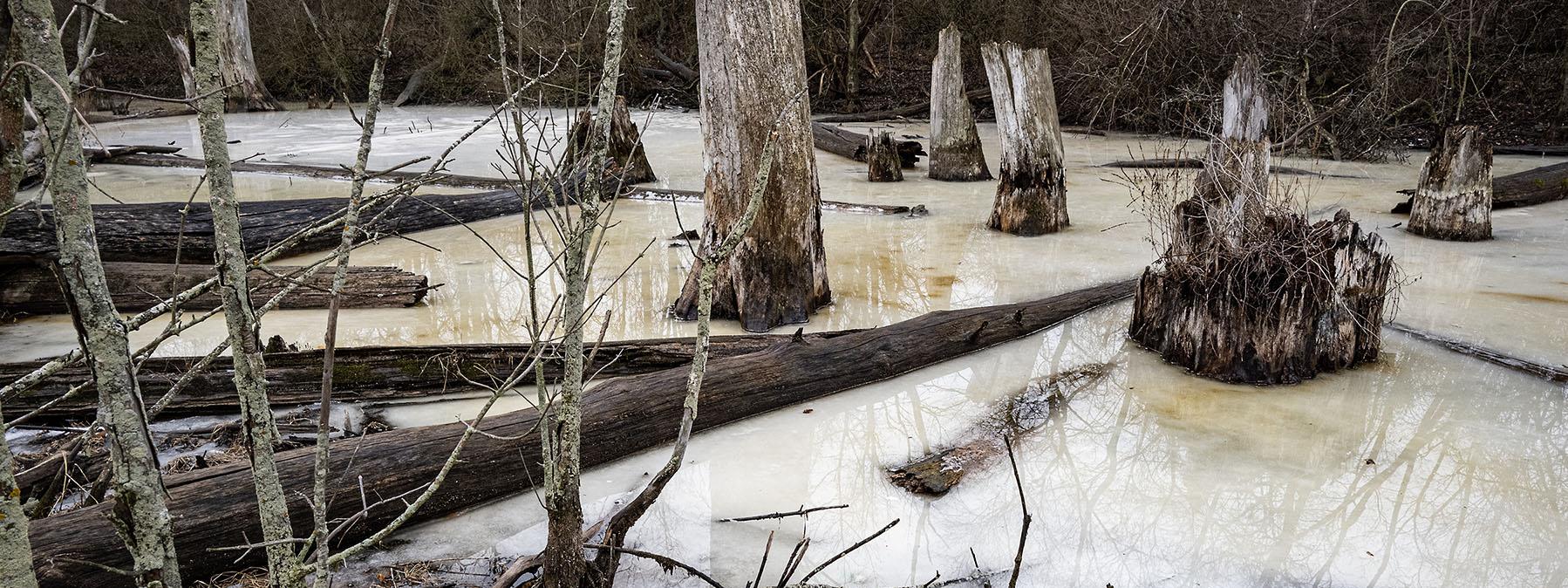
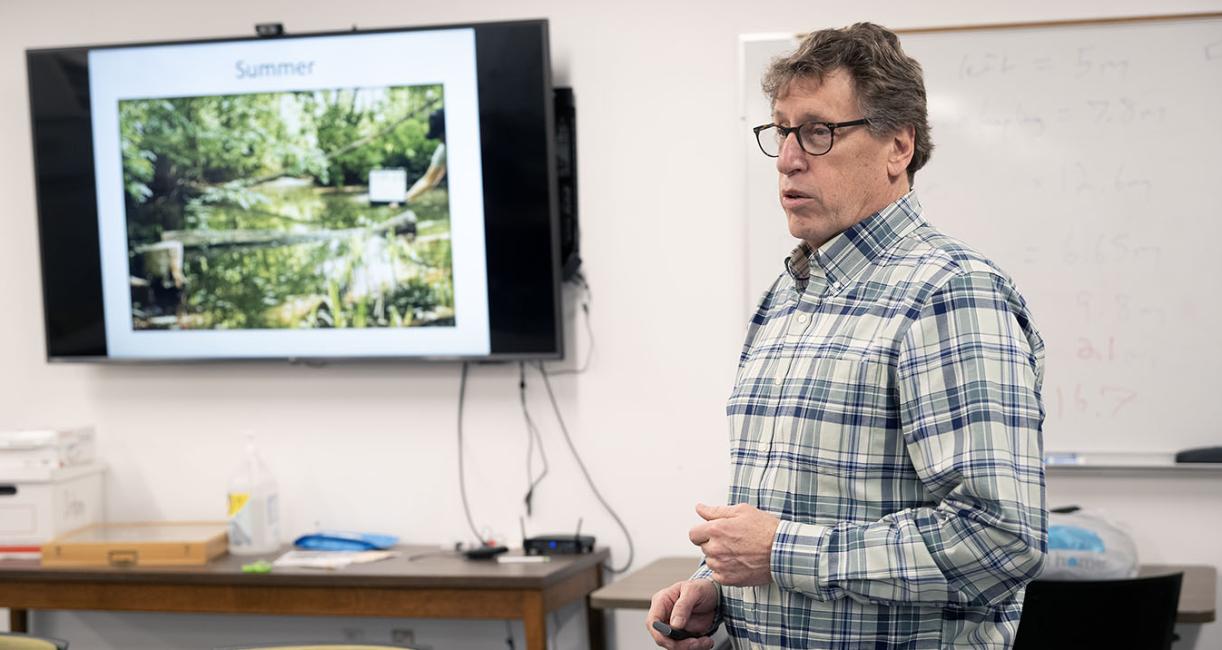
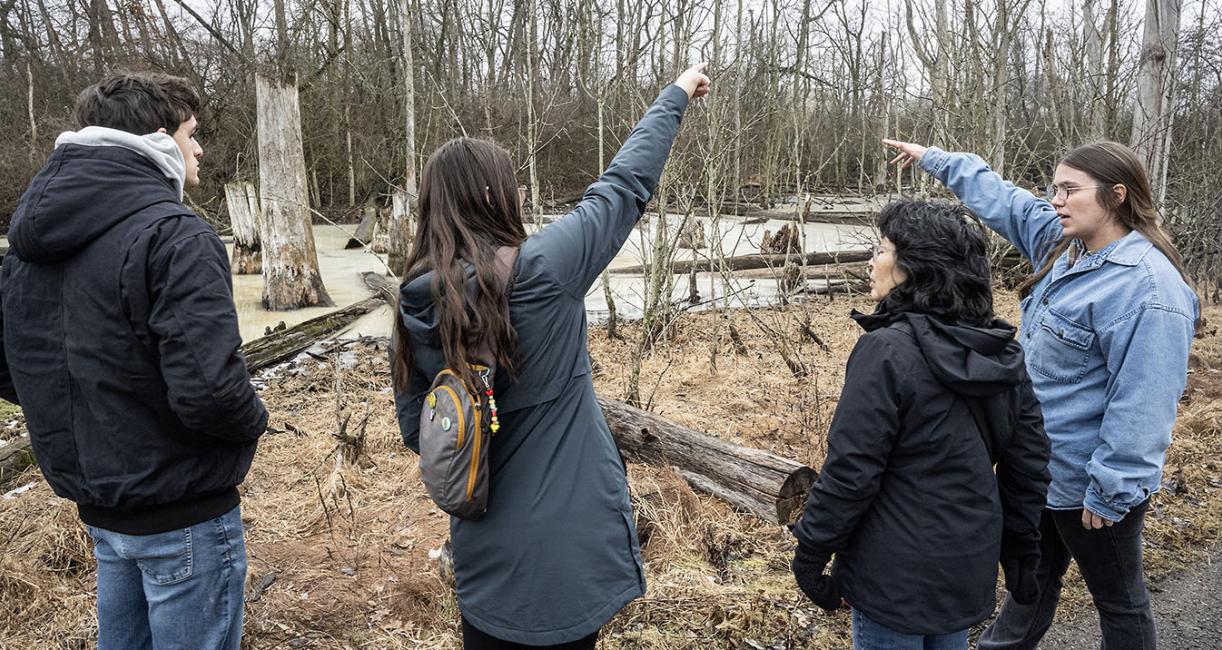
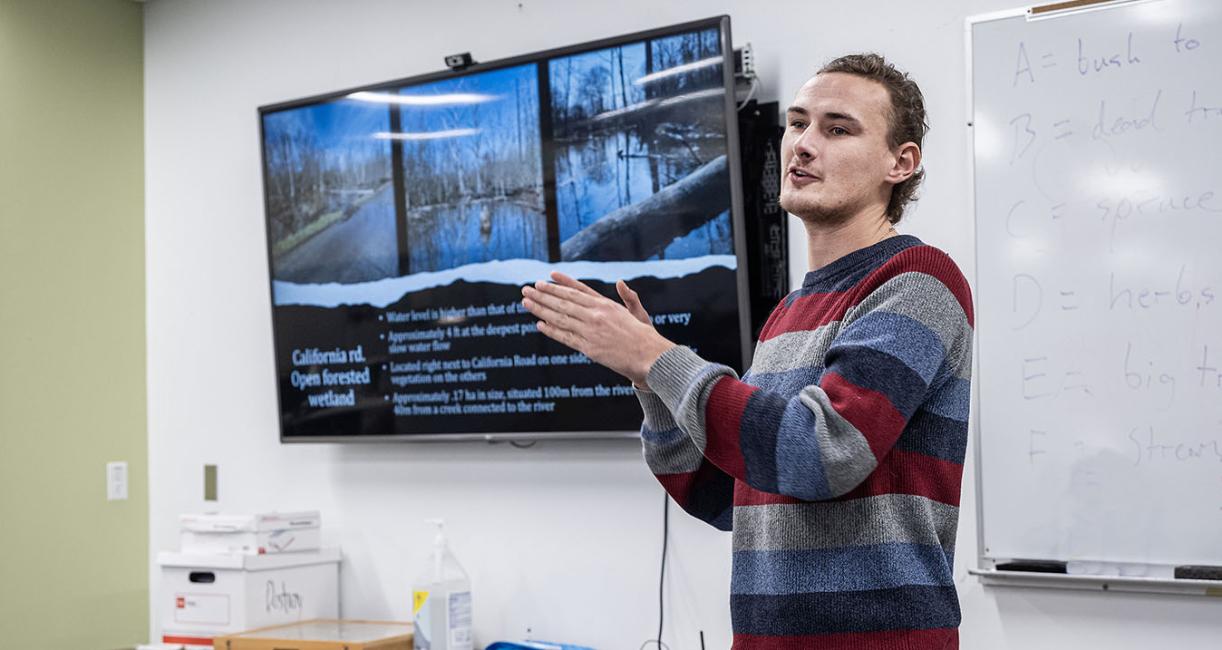
Kingsbury, ERC observe World Wetlands Day with discussion about winters near the water
By Blake Sebring
February 11, 2025
To commemorate World Wetlands Day on Feb. 2, the Environmental Resources Center in the College of Science at Purdue University Fort Wayne hosted its annual presentation to discuss the importance of these natural areas. This year, Bruce Kingsbury, director of the ERC, talked about what happens to wetland animals when the weather turns colder. The answers provided tremendous variations.
“Isolated wetlands no longer have federal protection, and the protections at the state level have been gradually reduced,” said Kingsbury, who is also a professor of biology at PFW. “They are constantly under threat.”
Kingsbury described to the group that was assembled how many animals go deep underground or underwater during the winter seasons. As part of that, he showed a video of turtles being active on a river bottom, though some animals go into a form of suspended animation during this time of the year.
Other species dig into the mud and don’t do anything, such as wood frogs, which can survive for extended periods nearly frozen solid. Their livers release glucose that draws blood out of tissues where it freezes in parts of the body that don’t have sensitive structures.
“The ice forms there, and it doesn’t form big long pieces that could rip through the tissues,” Kingsbury said. “Instead, it forms ice in a more loose structure that does not damage the frog.”
Kingsbury also explained how snakes and other species will move into abandoned burrows. Sometimes, Eastern Massasauga rattlesnakes will share a burrow with a cluster of garter snakes nesting on top of them, with possibly a group of other animals such as green frogs closer to the surface.
“They are all packed in there, but they don’t eat each other because they are too cold,” Kingsbury said. “The ones who might get eaten leave first.”
Kingsbury and his students once used a bore scope in Grayling, Michigan, to discover upwards of 15 snakes in a burrow.
He also said some snakes spend the winter underwater.
“That’s counter-intuitive for a lot of people because they think the snakes would drown, but in fact, they don’t because their oxygen level demands are so small they can just periodically stick the tip of their nose out of the water and get a breath,” Kingsbury said. “We know of garter snakes which never surface because if there is enough oxygen in the water they can do enough gas exchange through their skin.”
Jean-Baptiste Johnson, a graduate student under Kingsbury’s direction, told the group about his studies of turtles along the wetlands west of the St. Joseph River along California Road, just north of the Hefner Soccer Fields. Johnson, B.S. ’23, said the area is less than half an acre, or about the size of a large university classroom, and is four feet deep. It supports the river’s turtle population during the winter.
“This site stood out for having a very high population density,” Johnson said. “When I went back there in the summer, there weren’t as many turtles. The level of water gets lower throughout the summer as the water evaporates or flows into the river.
“We’re trying to show that those areas are important because they protect the population of the whole river without necessarily changing the dynamic of the landscape of the river too much. This wetland is not very hard to protect. Wetlands for a variety of reasons are very ecologically important and interesting areas.”
After starting his project as an undergrad, Johnson continues to track snapping turtles, but has shifted his research focus to downtown Fort Wayne. There he is trapping turtles to learn about their diversity while also tracking them using radio telemetry. He found one turtle had traveled from near campus and through the confluence of the city’s three rivers to arrive at Headwaters Park, which is on the St. Mary’s River.
As Kingsbury pointed out, these are critical habitats for breeding or staying in the winter. Having great summer habitats doesn’t matter if there is nowhere for the species to go and survive the winter.
The ERC’s next public event is Naturally Inspired on March 20 from 5 to 7 p.m. at the Steel Dynamics Keith E. Busse Mastodon Alumni Center. This annual event celebrates the connection between nature and art.




